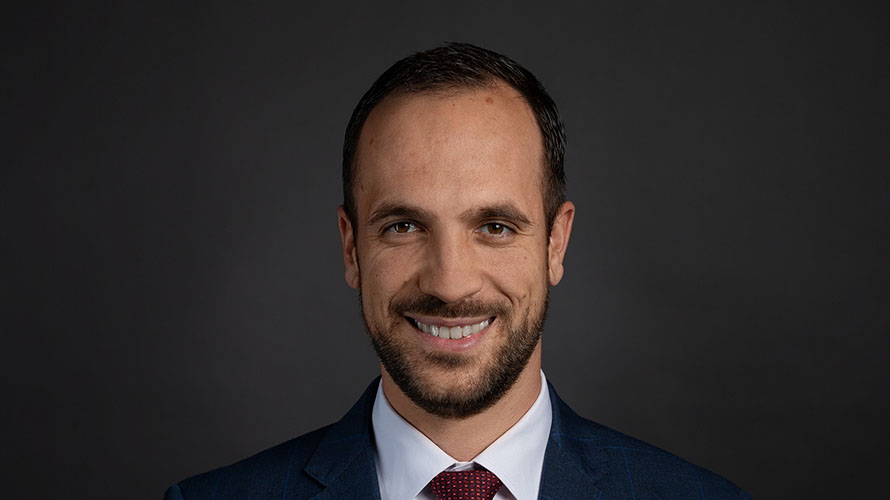“Better be prepared for the second wave” — live stream #10

Get familiar with our new “second wave” checklist, presented by Frank Häusler and Stefan Eppenberger
Simple rules of thumb or checklists are often more suitable for navigating in a world of uncertainty. In this live stream, our experts introduce you to a “second wave” checklist that will come in handy, as the possibility of a second lockdown cannot be excluded. Plus: Learn, whicht 10 key factors are worth keeping an eye on for investors.
What to expect in this replay: Our investment experts checked different scenarios that might arise. They explain why a “second wave” checklist helps investors stay on top of all the developments. Follow the introduction and a Q&A session with Frank Häusler, chief strategist, and Stefan Eppenberger, investment strategist within investment content team. © Vontobel, recorded on May 14th, 2020, 8:00 p.m.
The “second wave” checklist
10 key factors that would prevent another financial market crash
Updated in October, 2020, after most countries have put new lockdowns in place.
| Factor to monitor | Current rating and comment |
||||
|---|---|---|---|---|---|
| virus & curation |
① |
The virus is less harmful than we think | Too many deaths to ignore | ||
| ② | Medicine: Scientists find a cure in time |
Many approaches, no breakthrough | |||
| ③ | Prevention: Scientists find a vaccine in time |
Broadly available not before 2021 | |||
| viral spreading |
④ |
Daily new cases do not significantly accelerate | Second wave has arrived | ||
| ⑤ | “Austrian approach” (early mover) works | Second wave has arrived | |||
| healthcare infrastructure |
⑥ |
Significant improvement in testing capacity | Headlines look promising | ||
| ⑦ | Health care capacity is sufficient for 2. wave | Sufficient—but regional bottlenecks | |||
| governmental actions |
⑧ |
WHO criteria don’t recommend further lockdowns | WHO recommends localized lockdowns | ||
| ⑨ | Governments decide to forgo new restriction | Different approaches everywhere | |||
| ⑩ | “Swedish approach” (shutdown light) works | Too early to say | |||
| Smileys show the ratings’ accuracy: | — | — | ||||
| achieved |
partly achieved |
not achieved |
||||
In order to fully value each rating’s implications, we recommend to follow the introduction and background information given above.
Expert interview

Stefan Eppenberger
Senior Investment Strategist
Stefan, you are expecting that this is not the end of the virus. What makes you so sure there will be a second wave?
There are two strong arguments why we must assume that there will be a second wave. First, the experience of the other two similar pandemics: the Spanish flu at the end of World War I and the swine flu in 2009/10. Unfortunately, in both cases, the second wave was not only stronger, but there was even a third wave which was bigger than the first. The second argument is also quite convincing: the lack of herd immunity. To achieve this state, at least 70% of the population needs to have become immune to an infection, whether through previous infection or vaccination. We are most likely a long way from that. We have only temporarily stopped the spread of the virus, not killed it. Also, there is still disagreement among experts as to whether someone is permanently immune after having been infected with COVID-19.
“Simple rules of thumb or checklists are often more suitable for navigating in a world of uncertainty.”
What is a “second wave” checklist? How does it work? How can investors use it for their strategies?
In our industry, competitors are outdoing each other with increasingly complex models to predict the future of the financial markets. However, more and more studies show that simple rules of thumb or checklists are often more suitable for navigating in a world of uncertainty. In our experience, such checklists are not only useful for investment experts, but also ideal for discussions with end clients.
At present, the most important question for the coming weeks and months will be how the financial markets will react to a “second wave”. It is important to note that financial markets fear further lockdowns, not the virus per se. However, the reaction of governments to the next wave does not necessarily have to be the same as it was to the first wave. Many factors will play a role. In our second wave checklist, we have compiled the ten most important of these factors. For example, we look at the speed at which the virus is spreading and how governments are responding. The development of the testing and healthcare infrastructure will also be important. Of course, we are also keeping an eye on the progress of potential cures and vaccines for COVID-19. So this checklist serves as a kind of compass on the currently rough seas.
“We’re just being swamped with information. Our task is to check and filter this data.”
You are working with three scenarios, and a lot of other data connected to your second wave assumptions. Could you briefly describe how you have aggregated your opinion, given this mass of information?
Data is a great challenge, indeed. But it’s not about the availability of data. The data sets chosen should also be easily available and regularly updateable. This is particularly tricky with COVID-19 data, as comparability between different countries is questionable. Just to give you one example: Chile counts those who died of Coronavirus as “recovered” because they are no longer contagious. Despite these peculiarities, our goal is that not every portfolio or relationship manager has to do this exercise himself, but that we are able to make our analysis available to them in a clear and concise form. The great feedback we’ve received so far on our “Time to Buy Equities?” checklist encourages us to continue in this way.
Now the crucial question to the experts: of the three scenarios mentioned, which one has the highest probability? Moreover, does the learning curve we all came down in the first wave help prevent a second meltdown of the markets?
This is a question that cannot be answered yet. There will probably be major regional differences. Not only with regard to the extent of the second wave, but also in the reaction of governments. In general, we assume that governments will react less restrictively than in the first wave. They know more about the virus and are therefore better prepared. The economic repercussions will probably receive more attention, because the economic costs will become increasingly visible. More governments could try the Swedish approach, which has also been praised by the WHO. But even this approach has its pitfalls, so it is important to follow developments there closely. You will find this approach on our checklist too.
“Finally, people can get out of their homes and spend some money.”
Stefan, thank you for the insight into how we as investors can deal with a second wave. One last question: do you have any good, optimistic news for this week?
Of course it’s great to see that, starting this week, shops and restaurants will be reopening in Switzerland as well as some other countries. The generous stimulus from governments and central banks around the world is of little use if people cannot get out of their homes and spend some of that money. Our hope is that the level of self-discipline among the population will remain high, which will help keep the second wave under control. Here, of course, we are speaking not only from an investor’s point of view, but for the well-being of society as a whole.
Current topic: Our series on “Life after Corona”
What moves the world, impacts the markets. Discover interesting perspectives that personalities from a wide range of disciplines share with us concerning our post-Corona life. Our investment experts round out the picture with market assessments and macroeconomic analyses.
White paper: “The world upside down” — 6 challenges for investors “after Corona”
Behavioral economics: “Corona is forcing us to experiment”
Economic history: Why it’s worth taking a look into the past – and across cultural divisions
From the feuilleton: “Corona: The demonic dance, in globalized real time”



